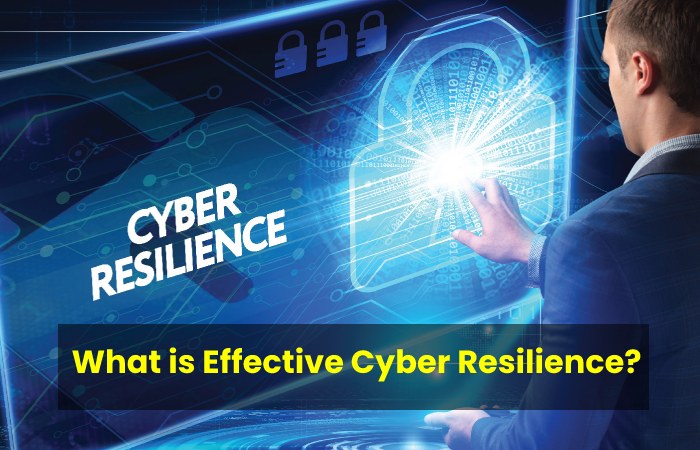Cyber resilience is a concept that combines organizational resilience, information system security, and business continuity. In other words, the idea refers to the capacity to achieve desired results in the face of complex cyber events like cyberattacks, natural catastrophes, or economic downturns. How effectively a company can continue operating with little to no downtime depends on its level of information security expertise and resilience.
Table of Contents
Why is Cyber Resilience Important?
Cyber resilience is vital because traditional security measures are no longer enough to ensure adequate information security, data security, and network security. As a result, many CISOs and IT security teams now shoulder that attackers will finally gain unauthorized access to their organization.
The truth is opposing cyber events harmfully impacts the privacy, integrity, and availability of organizations every day. These events may be intentional or unintentional and caused by humans, nature, or a combination thereof.
Today, it’s as essential to reply to and recover from safety breaches as it is to remain able to prevent them. The essential for cyber resiliency remained well summed up by Lt. Gen. Ted F. Bowlds, former Commander, Electronic Systems Center, USAF:
What are the Four Basics of a Successful Cyber Resilience Strategy?
The Four Elements of a Favourable Cyber Resilience Policy are:
Manage and protect: This includes developing the ability to classify, assess, and manage cyber risks associated with network and information systems, including those across your third-party and fourth-party vendors.
Identify and detect: This involves continuous security monitoring and attack surface management to detect anomalies, potential data breaches, and data leaks before any significant damage.
Respond and recover: This includes implementing adequate incident response planning to ensure business endurance, even if you remain the victim of a cyberattack.
Govern and guarantee: The final element is to ensure that your resilience program remains overseen from the top of your organization and part of business as usual.
What is Effective Cyber Resilience?

Effective cyber resilience must be an enterprise-wide risk-based strategy, a collaborative approach driven by executives to everyone in the organization, partners, supply chain participants and customers. It must proactively manage risks, threats, vulnerabilities and the effects on critical information and supporting assets.
Effective resilience also involves governance, risk management, an understanding of data ownership and incident management. Assessing these characteristics also demands experience and judgment.
Tasks to Achieving Cyber Resilience
Realizing is challenging because enterprises lack real-time visibility of the security posture related to their IT assets and infrastructure in light of the rapid evolution of networks and changing threat landscape. They often don’t recognize what help to protect, where and how they could remain breached, and whether adequate security controls are in place. If authorities are in place, security teams aren’t confident they’ll be effective against different threats. Time is another factor. In most instances, security teams cannot respond to threats promptly as many risk identification, and mitigation processes are still manual.
Improve Cyber Resilience
Cyber resilience is not a monolithic update. Instead, it consists of multiple steps with many iterations. The following measures an organization can take to improve cyber resilience.
Achieve Continuous Discernibility Across your Entire Environment
The first stage of cyber-resilience is to discern an organization’s cybersecurity posture, which starts with identifying all IT assets tied to the organization and knowing which IT assets are at risk. It includes business context about these assets and associated vulnerabilities and threats. Cyber risk quantification dashboards offer visibility into an organization’s risks in monetary terms. It allows stakeholders to prioritize risk mitigation actions based on business impact. Dashboards also provide visibility into the efficiency of security controls.
Conclusion
Cyber resilience is a must to secure electronic data and systems against cyberattacks and swiftly restart corporate operations in the event of a successful assault. A cyber-resilient organization can adjust to crises, dangers, adversities, and known and unforeseen difficulties. The ultimate objective of cyber resilience is to support an organization’s ability to endure challenging circumstances.
Also Read: What is AppSumo Used for? How Does AppSumo Make Money?
Related posts
Featured Posts
Vanessa Bryant: Who is She? Vanessa Bryant Net Worth 2021
Vanessa Bryant Net Worth – The mother nationality of Vanessa is the American Vanessa Cornejo Urbieta. However, she was born…
What exactly is Google App Console? – Smart Tech Crunch – 2022
You may expand your Google Play company by using the Google Play App Console to publish your applications and games….


